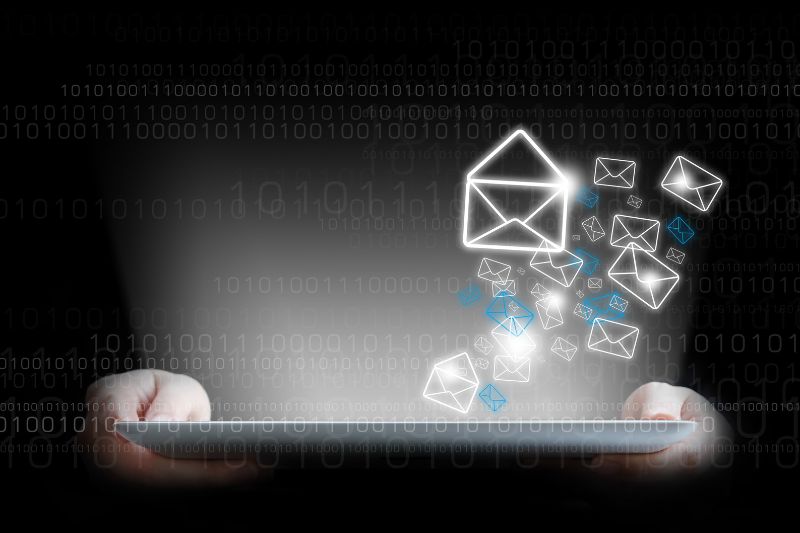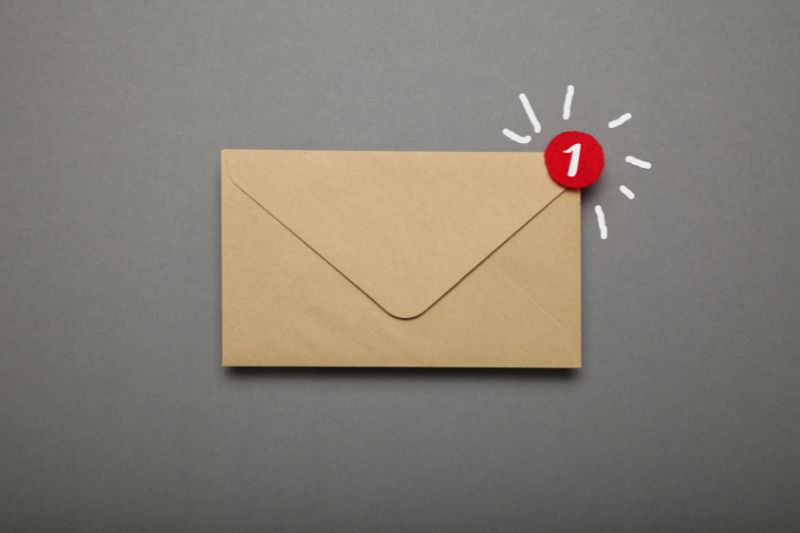The goal of every email marketer is simple: land their emails straight into their target’s inboxes.
Yet, the journey to achieving that goal is not really so straightforward. Emails can get lost in the digital wilderness and, worse, land in the dreaded spam folder.
If you want to elevate your email game, we’ll share insights about the email return path and its benefits you don’t want to miss.
What is an Email Return Path and How Does It Work?
An email return path, also referred to as a reverse path header, bounce address, or SMTP address, is a hidden header that details where and how bounced emails are processed.
It ensures that emails failing to reach their destination are rerouted to an alternate email address. This centralizes the collection of undeliverable emails, thereby maintaining the cleanliness of your main inbox, which remains dedicated to responding to customer inquiries.
It can be viewed in the raw message source by both the recipient and the sender and is usually somewhere at the top of the email, although not immediately visible.
The return path also serves as a debugging data set by the receiving server for an ESMTP or SMTP transaction. The Simple Mail Transfer Protocol is an email protocol for transferring emails between computer networks and servers. [Related Post: SMTP Server – All You Need to Know]
This SMTP address (or SMTP MAIL FROM) is incredibly important for any email program because it protects the senders by having a separate location for processing and collecting bounced messages while your original sending inbox is not filled with “failed delivery” messages.
![]() Canva/ khunkorn
Canva/ khunkorn
How the Return Path Works
Whenever an email is sent, the mailbox provider (Gmail, Yahoo Mail, or Hotmail, for instance) adds a return path header. This header provides a return path domain, which is the same domain as the main email address.
The mailbox provider does this to validate the sender’s identity and its sending reputation before landing the mail in the intended recipients’ inboxes. With this validation process, the return path and the Domain-based Message Authentication, Reporting & Conformance (DMARC) work together to get the sender through the filters.
DMARC is an email authentication and reporting protocol created to spot and prevent phishing. Of the many tasks that this email validation system performs is to ensure that the sender’s name matches the return path name.
All emails must include a return path header to track bounces. If it’s missing and a bounce happens, the email servers will be confused as to where to send the bounce signal.
As an email marketer, you will not know that a bounce occurred, and you won’t be able to remove the email address from your list without the return path. So, as you continue to send to such an address, your sender score will be negatively impacted.
Of course, you can take steps to repair your sender’s reputation, but it takes time. Wouldn’t it be better to avoid it from the beginning? The return path is an excellent solution to dealing with that.
Is the Email Header Return Path the Same As the Envelope Address?
No, they are not the same.
The envelope sender is where computers respond in case of delivery errors or bounce messages, while the email header return path tracks email bounces. The email return path contains a copy of the envelope sender address.
There should only be one return path. So, each time there’s a bounce, mail servers will send notifications to such email header return path address.
Many senders put identifiers in their return path addresses to simplify handling bounce traffic and replies. This technique is called the Variable Envelope Return Path (VERP Address) or a custom return path, which we will discuss later.

Importance of Return Path Header in Email Marketing
The email header return path is an important tool for email marketing campaigns, especially if you’re a mass email sender. This is because messages can bounce, especially when sent to large groups.
And the higher the bounce rate (more emails fail to reach the intended recipients), the higher it’ll hurt your email deliverability. Nobody wants that, even spammers.
Luckily, lessening the email bounce rate doesn’t have to be so difficult. You can land smoothly in your recipient’s inboxes using a return path.
In fact, having a good email return path improves your email marketing campaigns in many ways, such as the following:
Boosts brand trust and reputation
Recipients are more likely to engage with you when you consistently send them valuable and relevant content while properly using a return path. In return, it boosts brand trust and reputation because of that positive user experience.
Higher ROI
When your recipients are confident that your emails originate from your brand, it can lead to higher open rates and engagements. In turn, it leads to good conversion rates and higher return on investment (ROI) for your email marketing endeavors.
Increases email deliverability rate
As much as we hate email bounces, they still happen, and every email marketer should be aware of that to help their campaign’s deliverability. A good return path boosts the chances of your emails reaching the intended inbox rather than getting lost in the spam folder.

Increasing your email deliverability does not require magic. It’s all about understanding the email ecosystem and adapting the best email marketing practices. And what better way to do it than using a trusted email deliverability tool like InboxAlly?
It’s a tool designed to ensure your emails consistently land in the inbox and stay away from the spam folder. It demonstrates to inbox providers, like Yahoo Mail and Gmail, that your emails are important to your recipients.
On your behalf, the deliverability tool sends emails to genuine email addresses to create good email engagement.
When highly engaged recipients also mark their emails as important, inbox providers interpret the email as “extremely valuable” and put it away from the spam folder.
This reinforcement eventually improves your sender’s reputation and boosts your email deliverability rate.
Influences your credibility as a sender
The return path address stores all your bounced emails, improving your deliverability. As a result, you become more credible to inbox service providers like Yahoo Mail and Gmail.

How To Use Return Path to Your Advantage (Creating a Custom Email Return Path)
All email errors referring to bounced messages are typically sent back to the sender’s email address – a process that can be annoying and overwhelming for email marketers.
That’s where the value of a custom return path comes in. By implementing it, bounces are not combined together with legitimate emails in a single account, and this allows email marketers to manage email bounces efficiently.
In addition, email marketers can better interpret message failures and gather more accurate details for every failure with a custom return path address.
Thus, we encourage you to be consistent with the signals (where undelivered or return messages are sent when they don’t reach their destination) that your emails contain.
Here’s how you can configure or modify the return path to your advantage:
- Suppose your domain is example.com with a return path prefix “bbb,” as set by your email provider. Create a return path domain or subdomain on your main domain and insert the return path prefix in front of it. It’s like this: bbb.example.com.
- Build a canonical name (CNAME) and enter your DNS area. The CNAME is a record that maps the alias name or subdomain to another domain name (a canonical or true domain name).
It may appear like this: bbb.example.com CNAME = bbb.zohomail.com
In this example, your domain example.com now points to bbb.zohomail.com, while users can still see bbb.example.com in their email headers.
- Lastly, ask your email provider to activate the custom return path domain.
Note, however, that every server has a unique way of interpreting the custom return in the email header to establish authenticity.
Creating a custom return path email header isn’t required and doesn’t necessarily mean increasing the chances of getting your emails through. Still, it has many advantages.
More so if you have a DMARC policy for your domain. DMARC checks the return path and confirms that it matches the “From” address. If it doesn’t pass, such an email will fail the SPF alignment authentication. Learn more here: SPF, DKIM, DMARC explained [Infographic].

The Variable Envelope Return Path (VERP)
VERP is a custom return path for every recipient on a list. It’s a technique used to automatically remove undeliverable email addresses.
It is important because it provides more accurate details about every sending failure and provides users with a centralized focus on accessing and viewing the information of the outbound messages.
Strategies to Improve Return Path
Here are three strategies to improve your return path and optimize your marketing emails:
- Implement email authentication protocols. Doing this will make you a more trustworthy sender and reduce the chance of your emails being marked as spam.
- Regularly check your sender’s reputation. Monitor your sender’s reputation and make changes to improve it. These changes include managing your list, avoiding spam complaints, and maintaining a good sender reputation.
- Focus on engaging your audience. Create engaging and valuable content that resonates with your recipients. Encourage them to interact with your messages by sending personalized messages or including a clear CTA.
- Invest in a trusted email service provider or a quality email marketing tool. Lastly, users can use a reputable email service provider or a quality email marketing tool like InboxAlly. Such a tool or service keeps your reputation strong, ensuring that your messages land in the primary inbox from the start.
The Takeaway
Congrats! It is now easier to analyze your emails, determine potential deliverability problems, and find solutions to get maximum results by having a well-managed email header return path.
Not only will the return path help bolster your audience engagement and email deliverability, but it will also keep your original sending inbox free from unnecessary clutter. That way, you can focus more on what matters the most.
If your business depends on emails to connect with current and future clients, implementing a custom return path greatly benefits your campaign.
Learn more on how to power your email marketing campaigns. Get a Demo.